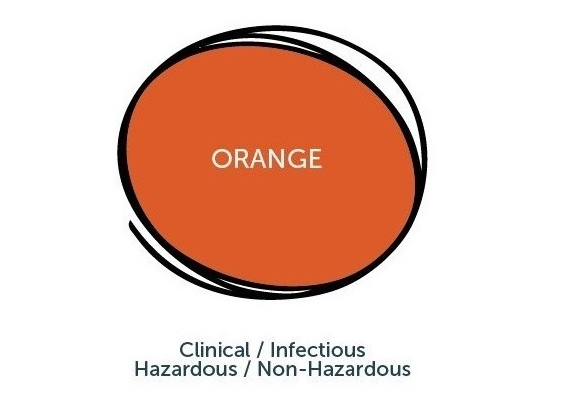Initial Medical brings you a series of blogs as part of its ‘Follow the Colour Code’ campaign’ discussing the colour coding system for waste segregation management and disposal. To kick off, here we look at orange…
The word ‘orange’ was first used to describe the colour in the 1540s (1), referring to the secondary colour that results when yellow and red are mixed. In nature, it is the colour of vivid sunsets, fire, flowers, fish and fruits and it often symbolises energy, vitality, adventure and social communication, inspiring and creating enthusiasm while also suggesting affordability (2).
The strong hue is believed to be the most controversial colour – usually triggering strong emotions and people either love or hate the colour.
According to ancient Feng Shui principles, orange stimulates focus and concentration, as well as promoting organisation. A study published in the Journal of Sensory Studies even found that orange-coloured cups made hot chocolate taste better than cups in other colours (3).
The colour also varies in meaning across different cultures – it is the emblematic colour of the royal family in the Netherlands, a symbolic colour for Northern Ireland Protestants, the symbol of love and happiness in China and Japan, a sign of outward humility for Buddhist monks and the Orange Chakra is the abdomen and creative centre in Eastern philosophy.
For providers of any surgical and non-surgical cosmetic procedures, the colour orange has another meaning – clinical and infectious waste.
According to the Department of Health’s Safe Management of Healthcare Waste Memorandum, best practice waste segregation is performed with the use of a colour coding scheme. Applicable to both hazardous and non-hazardous waste, this system ensures all waste substances, equipment and instruments are suitably segregated and then disposed of safely and effectively.
Segregation is necessary in order to prevent cross contamination and ensure items are disposed of in the correct manner, according to what they have been used for and how high an infection risk they pose for both the professional teams, the public and the environment. Each category of waste material is designated a colour to make this segregation easier and more efficient, and the system should be applied in cosmetic clinics. The type and colour of waste container used will vary depending on the clinical or infectious waste produced.

In the orange category, and therefore needing to be discarded in orange colour-coded bins, bags or sharps containers as appropriate, we have any waste arising from healthcare activities that could pose a risk to public health or the environment, unless properly disposed of. Clinical and infectious waste generated in the cosmetic care setting can include both soft and hard items that have been contaminated.
Soft waste that you might find in a cosmetic clinic includes contaminated:
Hey, wait!
Before you go.....
Let's stay in touch, pop your details here and we'll send our editor's hand-picked updates on your fave subjects.